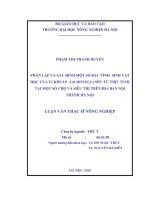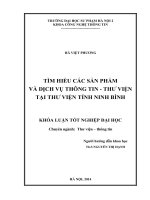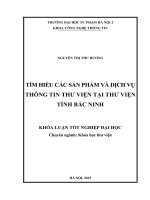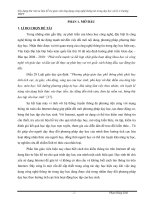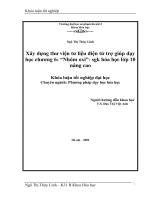kiến các nhà sinh vật học vũ trung kiên thư viện tư liệu giáo dục
Bạn đang xem bản rút gọn của tài liệu. Xem và tải ngay bản đầy đủ của tài liệu tại đây (29.18 KB, 2 trang )
<span class='text_page_counter'>(1)</span><div class='page_container' data-page=1>
<b>Rule 18</b>
<b>The Timekeeper and the Scorekeeper</b>
<b>18:1 In principle, the timekeeper has the main responsibility</b>
for the
playing time, the time-outs, and the suspension time of
suspended
players.
The scorekeeper has the main responsibility for the team
rosters,
the score sheet, the entering of players who arrive after the
game
has started, and the entering of players who are not entitled
to
participate.
Other tasks, such as the control of the number of players
and team
officials in the substitution area, and the exit and entry of
substituting
players, are regarded as joint responsibilities.
Generally, only the timekeeper (and, when applicable, a
Technical
Delegate from the responsible Federation) should interrupt
the
game when this becomes necessary.
See also Clarification No. 9 regarding proper procedures for
the
interventions of the timekeeper/scorekeeper when fulfilling
some of
the responsibilities indicated above.
<b>18:2 If there is no public scoreboard clock available, then </b>
the timekeeper
must keep the «responsible team official» for each team
informed about how much time has been played or how
much time
is left, especially following time-outs.
If there is no scoreboard clock with automatic signal
available, the
</div>
<span class='text_page_counter'>(2)</span><div class='page_container' data-page=2>
half-time and at the end of the game (see 2:3).
If the public scoreboard is not capable of displaying also the
suspension time (at least three per team during IHF games),
the
timekeeper shall display a card on the timekeeper’s table,
showing
the expiration time of each suspension, together with the
player’s
number.
57
Hand Signals
When a free-throw or throw-in is called, the referees must
show immediately the direction for the throw that is
to follow (signals 7or 9).
Thereafter, as applicable, the appropriate obligatory hand
signal(s) should be given, to indicate any personal
punishment (signals 13-15).
If it seems that it would also be useful to explain the reason
for a free-throw or 7-meter throw decision, then the
applicable one of signals 1-6 and 11 could be given for
the sake of information. (Signal 11 should, however,
always be given in those situations where a free-throw
decision for passive play was not preceded by signal 18.)
Signals 12, 16 and 17 are mandatory in those situations
where they apply.
Signals 8, 10 and 18 are used as deemed necessary by
the referees.
</div>
<!--links-->


